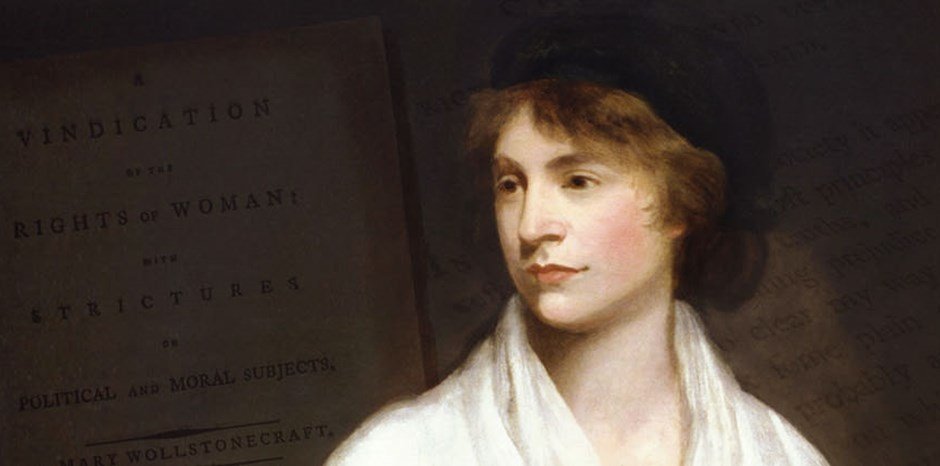Bet You Didn’t Know This About Women
By Cynthia J. McGroarty
Women’s History Month! Time to delve into the lesser-known facts about the lives of women past, particularly those women whose skirts and soles brushed the mud and cobbles of colonial America. Let’s get started.
Marital status: In the eyes of 18th-century law, single women (unmarried or widowed) and married women were as different as sharp cheddar and creamy Camembert. While a single woman could own property, run a business, make contracts and appear in court—i.e., engage with the world much as a man might—a married woman could do none of those things. She didn’t even have legal control over her own property. In other words, she was incorporeal, like Claude Rains in The Invisible Man.
This isn’t to say that married women weren’t thoughtful and busy. They ran households, helped run farms and occasionally chipped in with the family business, to wit, Peggy Mullan, who helped her husband run the Tun Tavern in Philadelphia and even lent her name to the restaurant portion of the establishment, Peggy Mullan’s Red Hot Beefsteak House (I like it!)
Women all over the colonies also formed women’s organizations and used them not only to dish about the neighbors but to talk about politics and the economy. (Take that, Dr. Franklin, and your junto, too.) One widows’ organization in New York published a political protest in the New York Journal, complaining that despite running businesses, paying taxes and keeping decent house, they were still considered second-class, entirely neglected, they wrote, and shut out of government.
Domestic abuse: A married woman’s husband could beat her with impunity and even put a bounty on her head if she ran away. Here’s an ad posted by one angry spouse in the South Carolina Gazette in May 1765.
Whereas my wife Mary Oxendine, hath eloped from me, this is to forewarn all persons from Harbouring or entertaining her, day or night.
Anyone caught helping the fugitive Mrs. Oxendine, the ad went on to say, may expect to be prosecuted with the utmost severity.
I don't know about you but I'm feeling comfortable right about now. Runaway human property, bounties, the long, tenacious arm of the law…Run, Mrs. Oxendine, run!
Poor widow auctions: If a woman was left poor by the death of her husband, and had no sympathetic relatives or other means of support, she needed to find another mate quickly. Otherwise she could end up on the block at an indigent widow auction and bound into service. And if she had children, they could be taken from her and indentured as well.
Human auctions, children torn from their mother’s arms…did I mention I was feeling uncomfortable?
Single by choice: Some women stayed resolutely unhitched despite a general social pressure to marry. This was especially true in Philadelphia up through the Revolutionary War years. Why? Because some of the religious sects who settled the city early on, e.g., Quakers and Moravians, held alternative views of what was expected of a woman. Quakers, for instance, were intent on forging their own life paths (lit by the Inner Light), women as well as men. That’s why Quaker women might stay single, choosing to become ministers or engage in other enterprises without being declared, uhm, unnatural.
Women on the frontier: Although Annie Oakley was still only a glint in the eye of history, women living in the wild, ungoverned territories of colonial America often knew how to shoot a gun and swing an axe. And they used this prowess to protect house and home, especially while hubby was stationed at some fort or other and Indians were about. Which brings us to…
Native American women: These women were valued among their own people for, among other things, their physical strength, their ability to pitch tents and build temporary housing, to act as guides and interpreters, and to cultivate crops. There was no sexual double standard and, if a Native woman was through with her husband, she didn’t need a divorce. She simply piled his belongings outside the door.
African American women: While the majority of black women in the colonies were enslaved, there were some determined free black women who were able to make decent lives for themselves. For instance, Rhode Islander Dutchess Quamino built a successful catering business, and Catherine Ferguson, who purchased her freedom in New York, taught black and white children at Katy Ferguson’s School for the Poor.
In fact, the 1790 federal census, along with the tax lists from various cities, reveal that a number of black women headed households and who owned enough property to be taxed. You go, girls! And please, if you see Mrs. Oxendine, could you give her a job?
Many thanks to two excellent histories: Founding Mothers: Women of America in the Revolutionary Era by Linda Grant DePauw and Not All Wives: Women in Colonial Philadelphia by Karin Wulf. And many thanks to all those women who have gone before us.
Editor's Note: Here at PhilaLandmarks we have letters and diaries that help to educate us about the lives of the women who occupied our historic houses. Most notably is Elizabeth Willing Powel, the eponymous mistress of The Powel House, whose many letters and account books illuminate the life of a well-heeled 18th C. woman. Good sources can be found HERE and HERE. And Sally Wister, whose teen-aged diary brings unique insight to the Revolutionary War, especially during the time her family home, now called Grumblethorpe, was occupied by the British! We are always listening for the voices of women. And always digging deeper in the hopes of discovering more.
#18thcenturywomen #womenshistorymonth #womensrights


